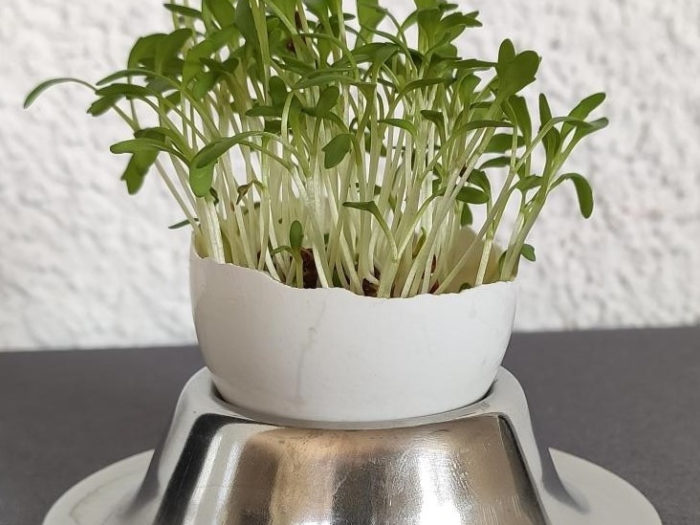What's going on, what's going on? That's what this experiment is about. Take different kinds of fruit and test how they behave with and without shells in the water.
A great experiment that you can do in the kitchen as well as in the bathroom (washing basin or bathtub). You will be amazed how enthusiastic the children are and how they stimulate this experiment to test the swimming behaviour or gravity of other objects.
Stay curious!
Media Education for Kindergarten and Hort
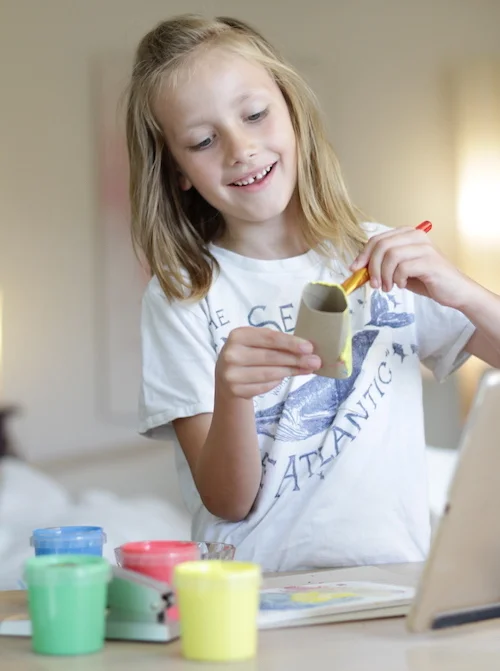
Relief in everyday life, targeted promotion of individual children, independent learning and - without any pre-knowledge already usable by the youngest!
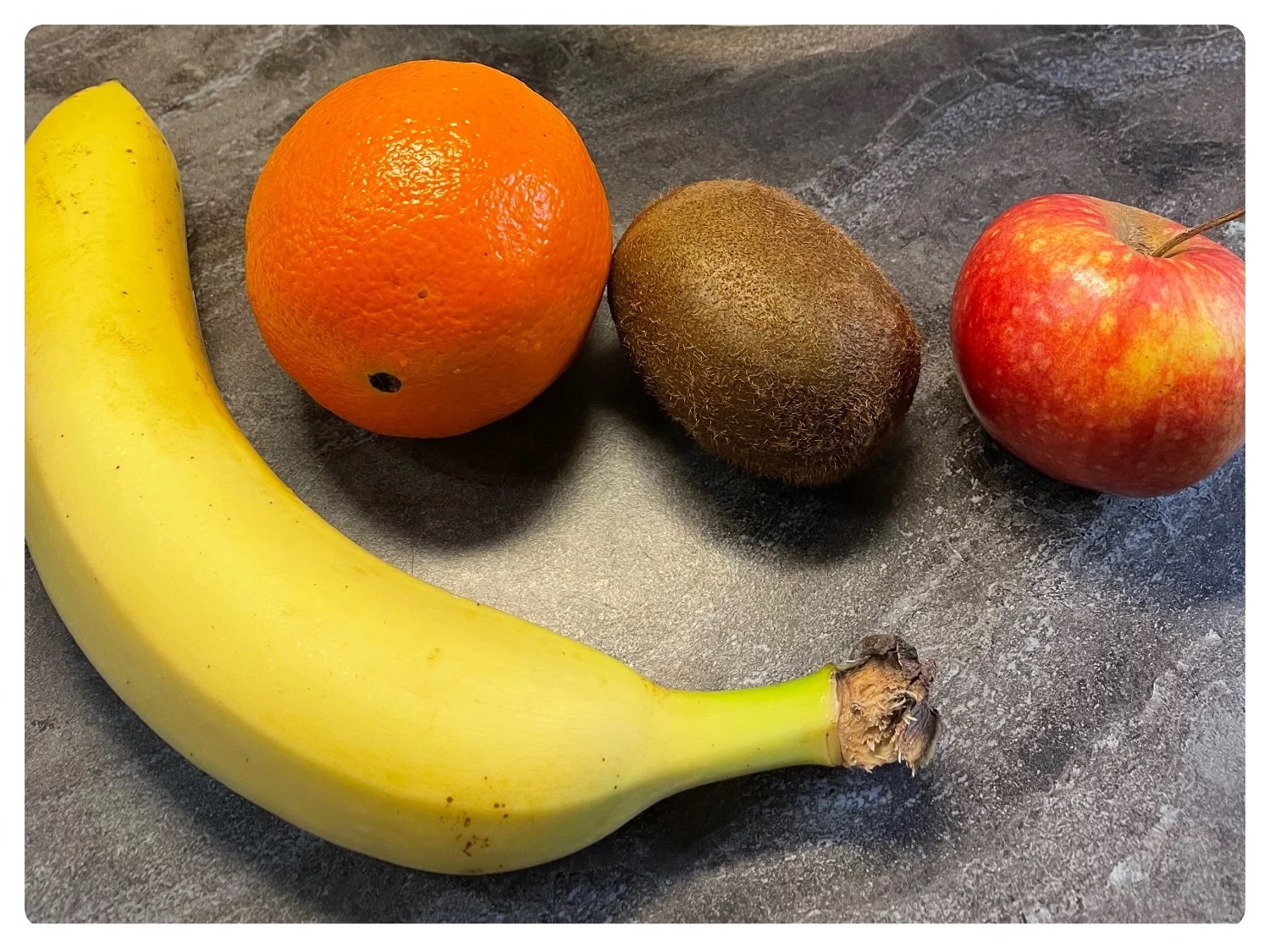
First, prepare the fruit to experiment and fill a large bowl of three quarters with water. Make sure that the bowl is so large that the individual fruit varieties can swim freely in the water.
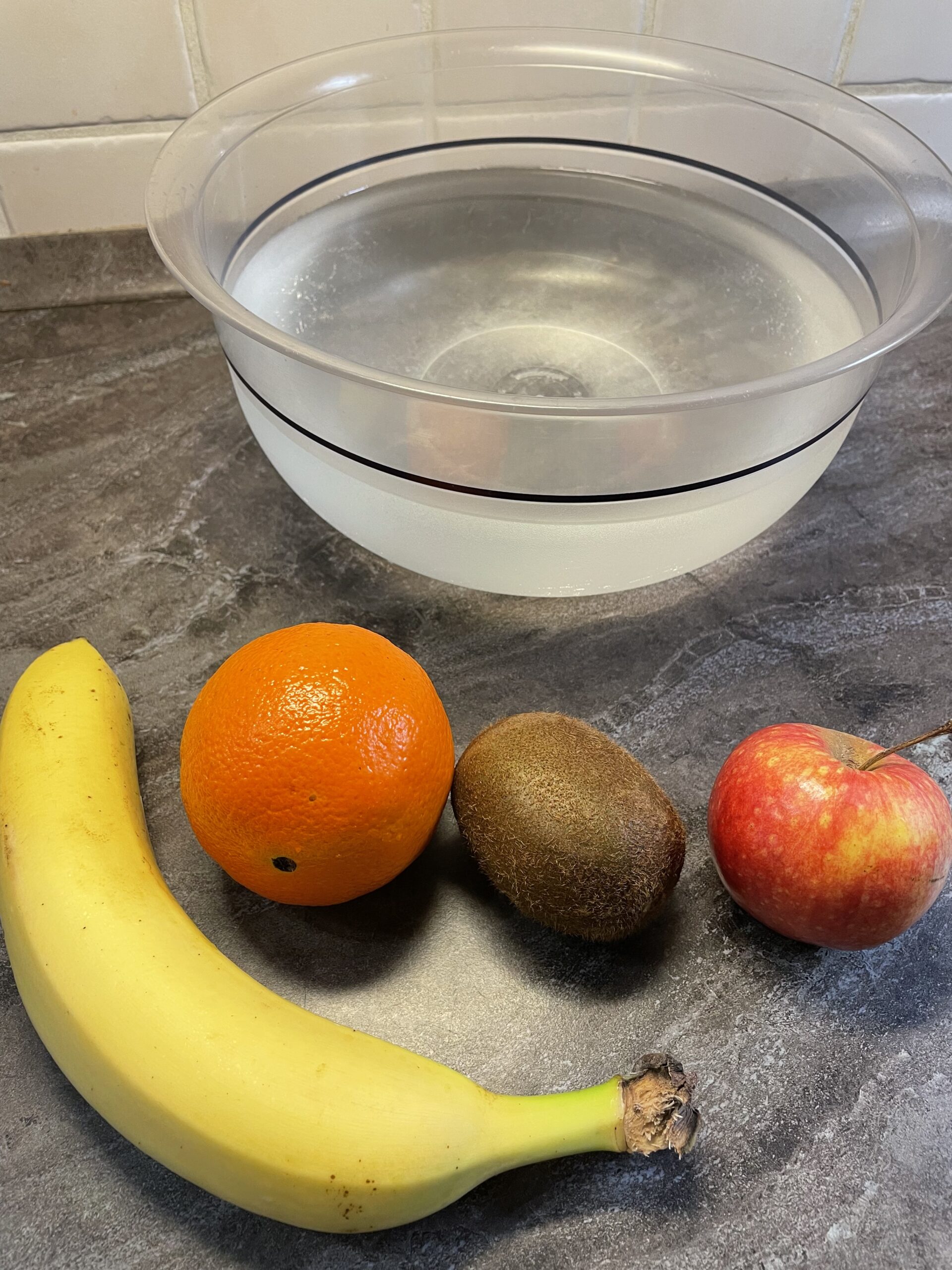
Now put fruit in the water one by one.
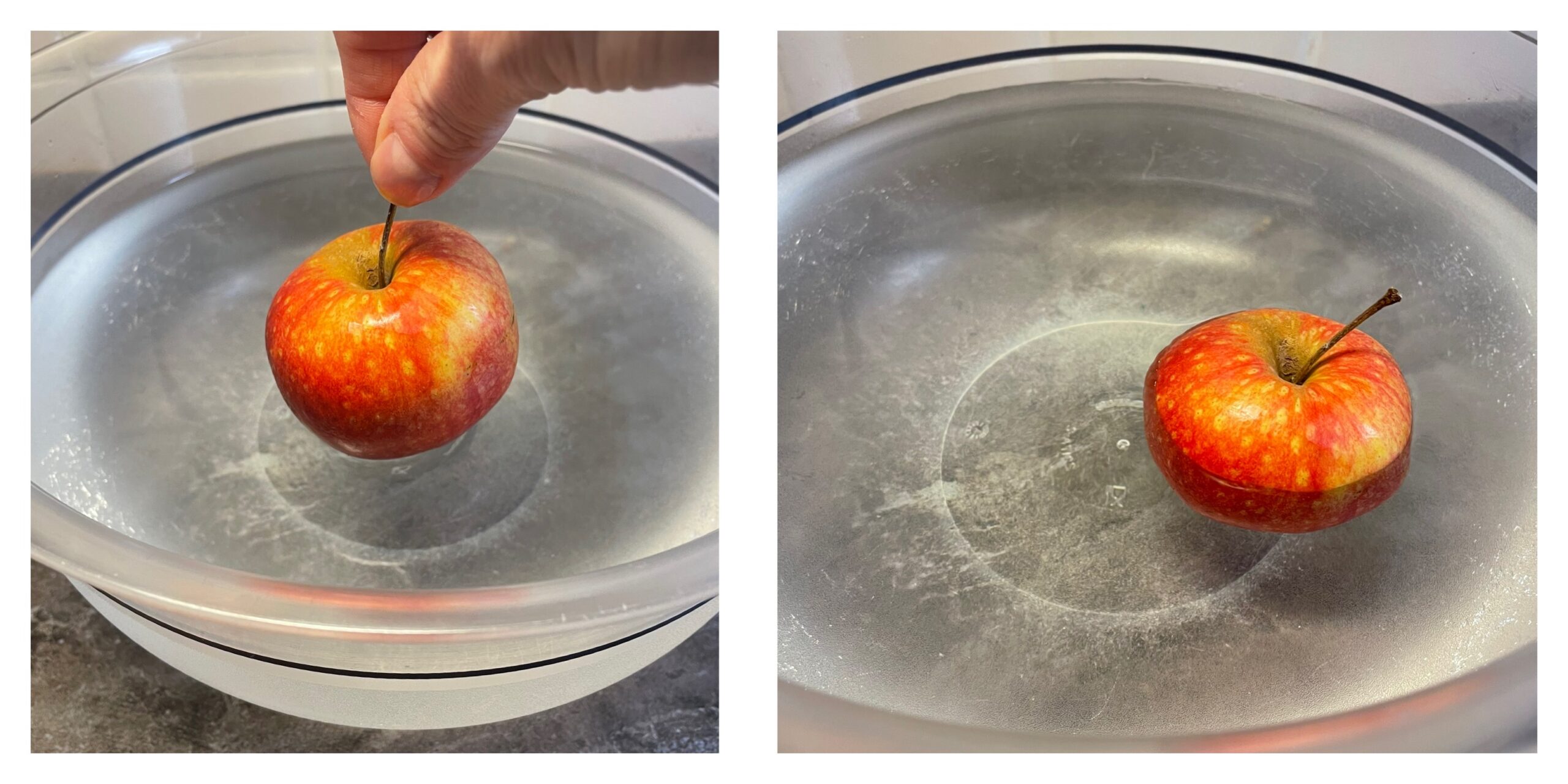


Watch and describe what happens.
The orange and apple swim while the kiwi goes down.



The children now take the fruits out of the water that do not swim.
Tip: Let the children name the fruit varieties and let them describe what they see. So they train to express themselves and learn new words.



Now you choose two types of fruit, whose shell we can't eat. Remove the bowls and try if they're still swimming.
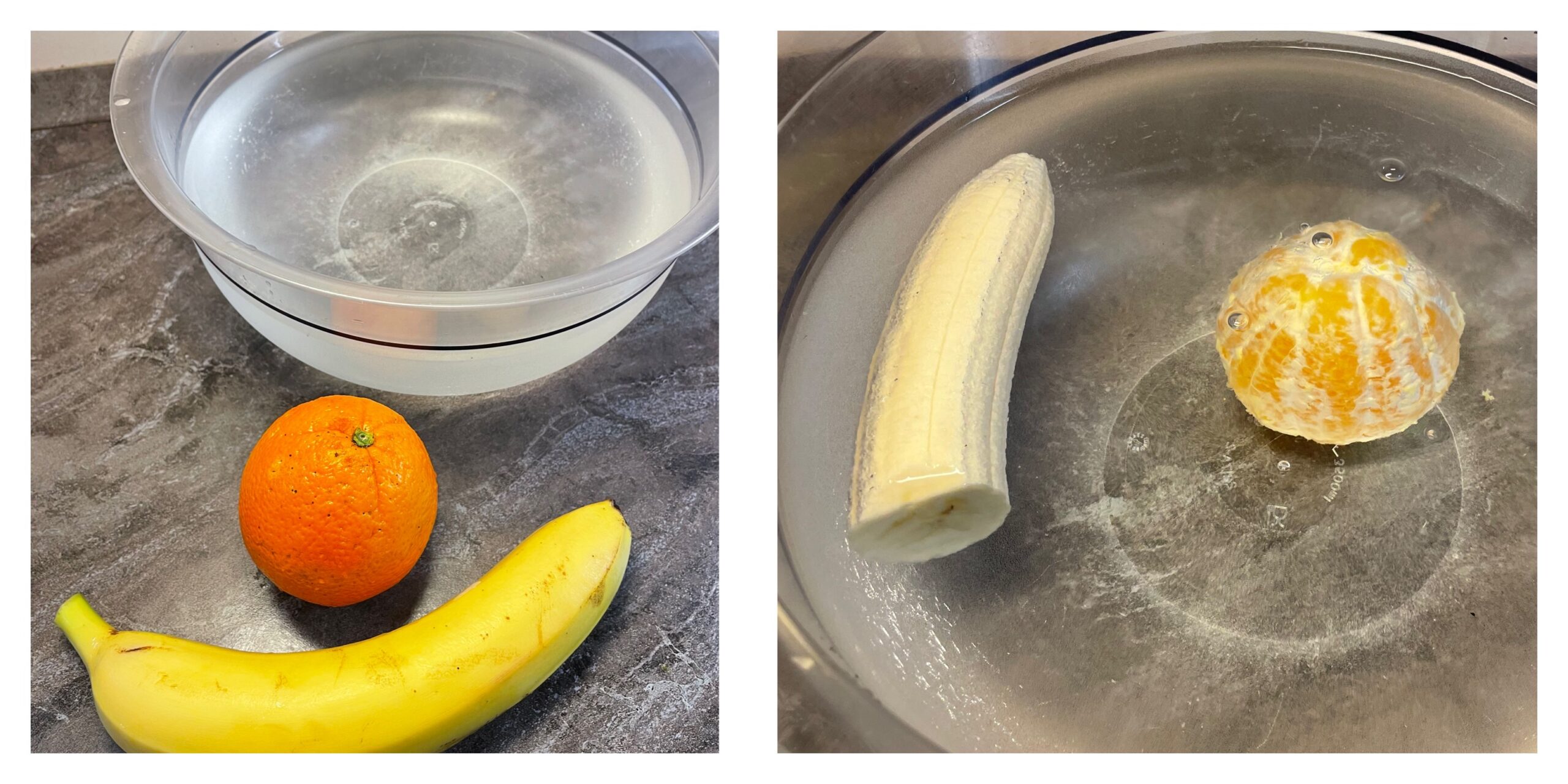


What do you find?
Bananas and oranges swim with their peel and without their peel, oranges sink down. Why is that?
Underneath the shell are small air bubbles, which allow the fruit to float on the water surface.
On the other hand, peeled oranges go down because the air layer of the peel is missing. The flesh of the orange contains a lot of water and hardly any air, which makes it loses lightness and sinks.
Bananas continue to swim because the pulp of bananas contains less water and the density of the pulp is looser and contains air bubbles, which also allow the peeled banana to swim.
Even a halved banana can swim. Try it out.
Tip: Build a small banana ship with the banana and eat it after playing.
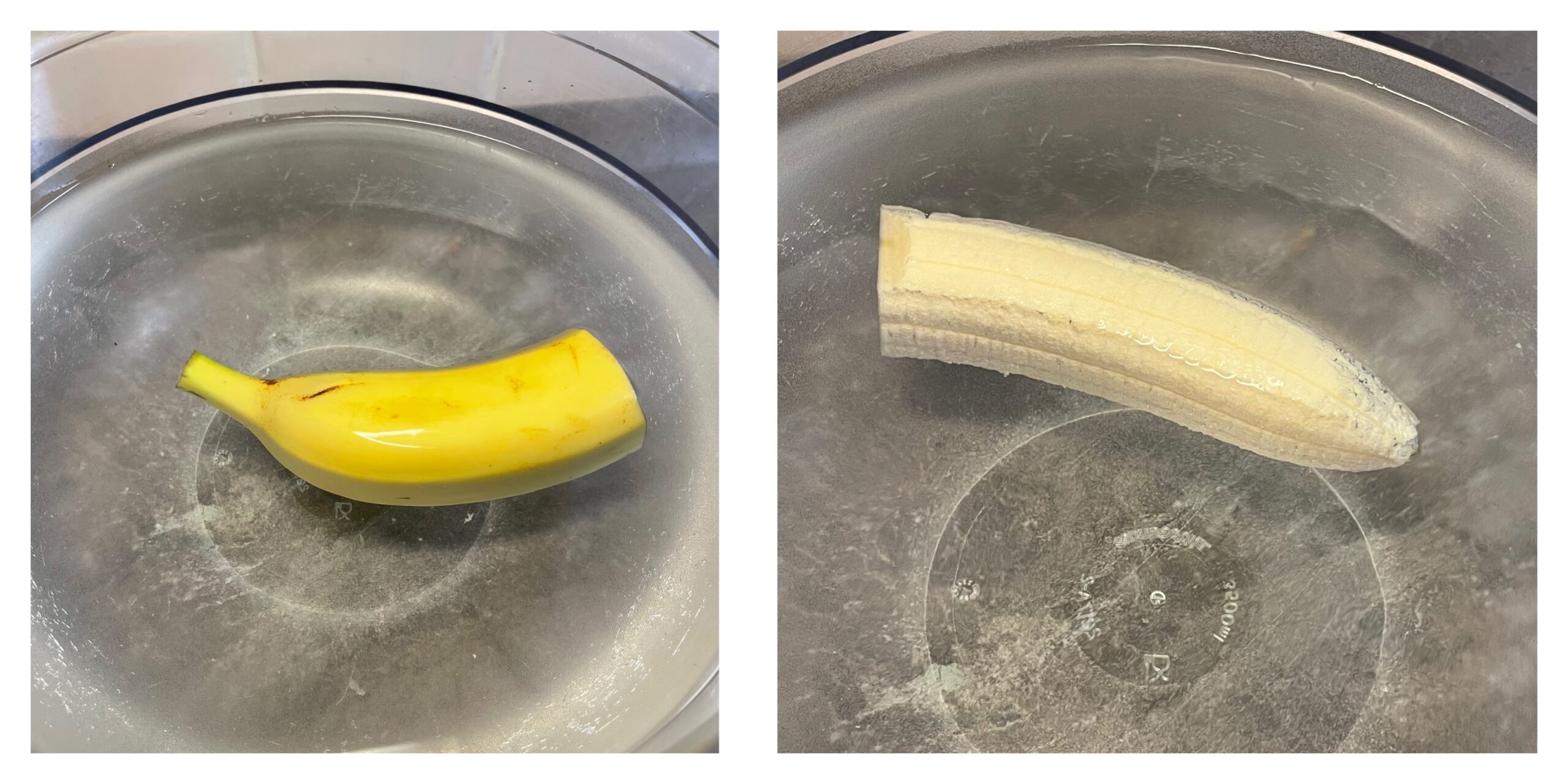


Have fun and stay curious!
Materials
Directions
First, prepare the fruit to experiment and fill a large bowl of three quarters with water. Make sure that the bowl is so large that the individual fruit varieties can swim freely in the water.



Now put fruit in the water one by one.



Watch and describe what happens.
The orange and apple swim while the kiwi goes down.



The children now take the fruits out of the water that do not swim.
Tip: Let the children name the fruit varieties and let them describe what they see. So they train to express themselves and learn new words.



Now you choose two types of fruit, whose shell we can't eat. Remove the bowls and try if they're still swimming.



What do you find?
Bananas and oranges swim with their peel and without their peel, oranges sink down. Why is that?
Underneath the shell are small air bubbles, which allow the fruit to float on the water surface.
On the other hand, peeled oranges go down because the air layer of the peel is missing. The flesh of the orange contains a lot of water and hardly any air, which makes it loses lightness and sinks.
Bananas continue to swim because the pulp of bananas contains less water and the density of the pulp is looser and contains air bubbles, which also allow the peeled banana to swim.
Even a halved banana can swim. Try it out.
Tip: Build a small banana ship with the banana and eat it after playing.



Have fun and stay curious!
Follow us on Facebook , Instagram and Pinterest
Don't miss any more adventures: Our bottle mail




